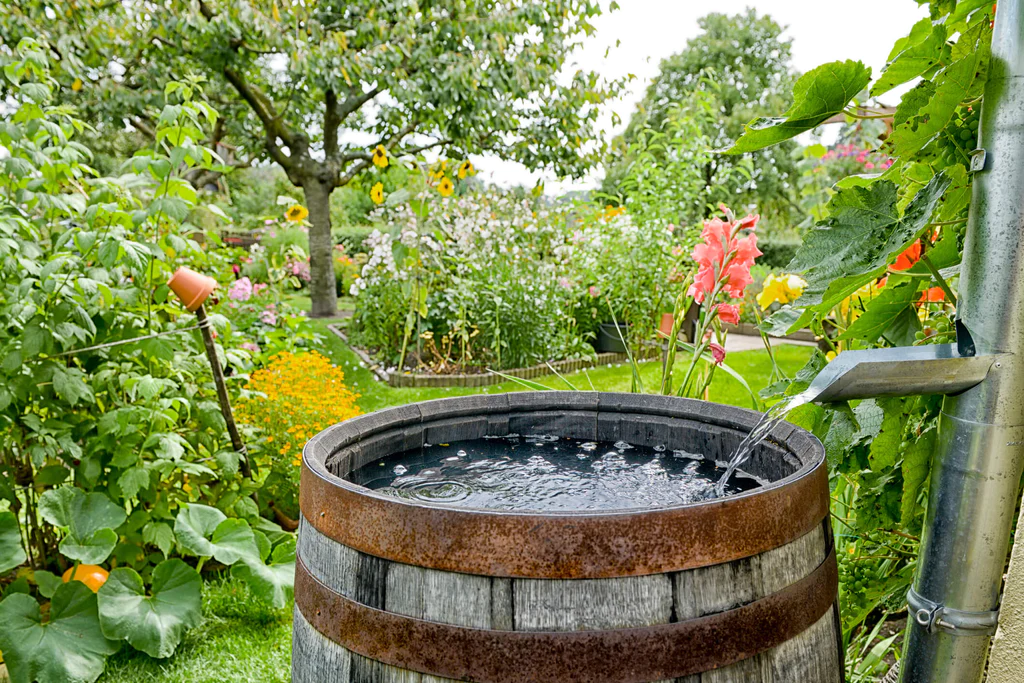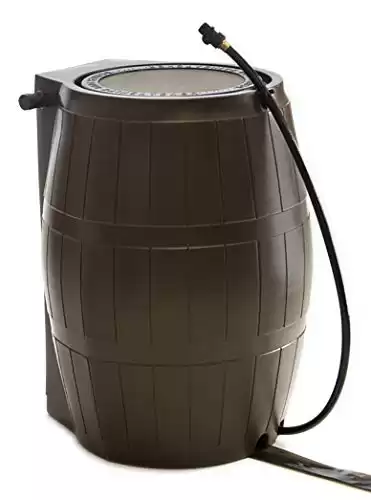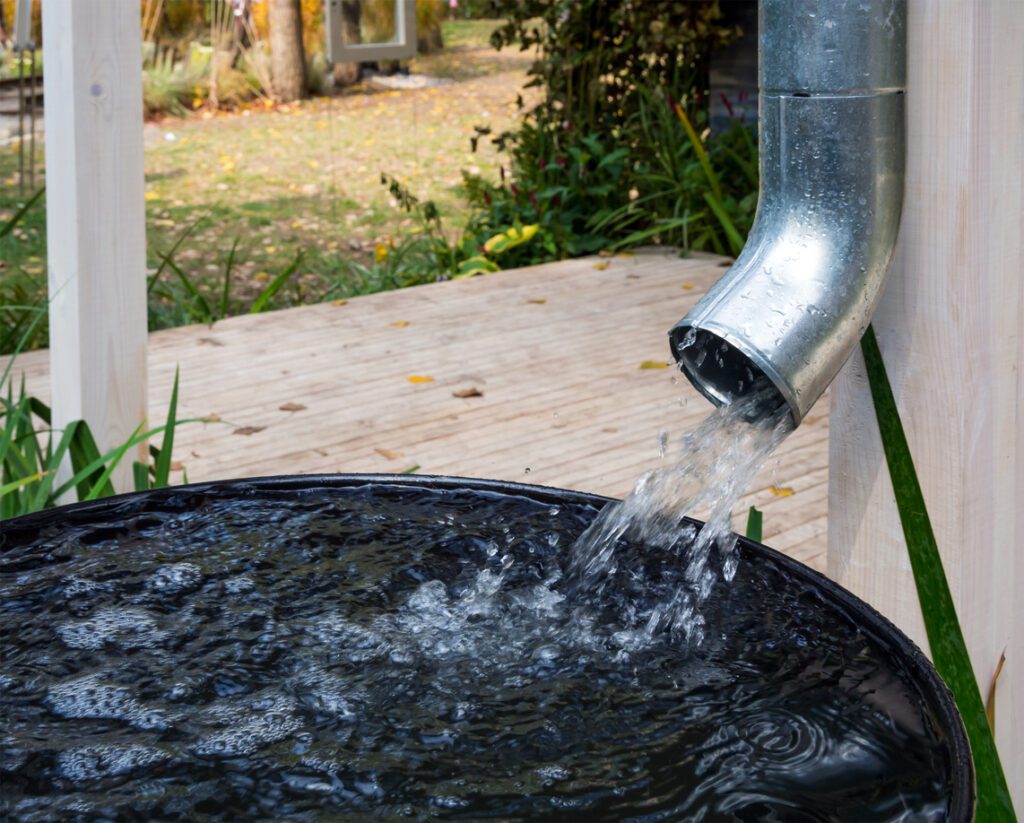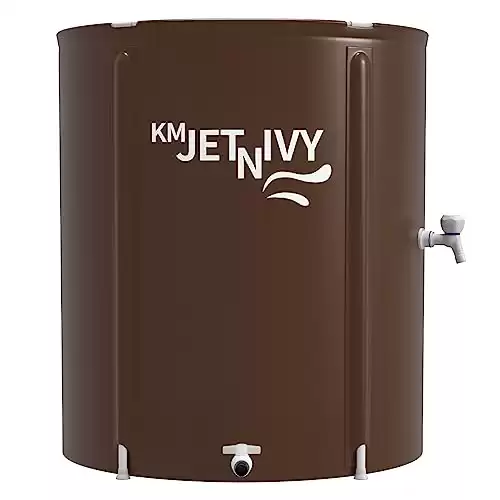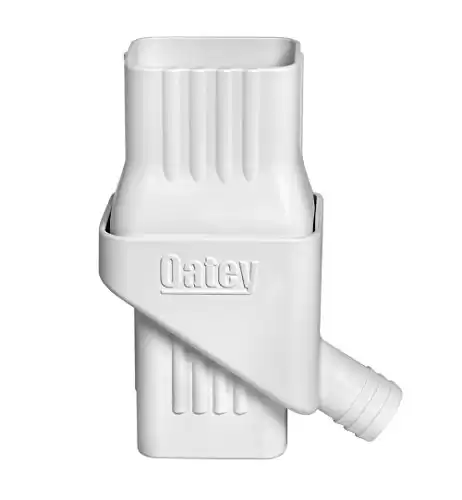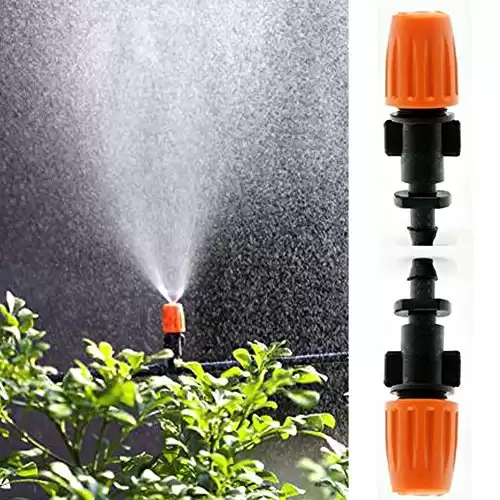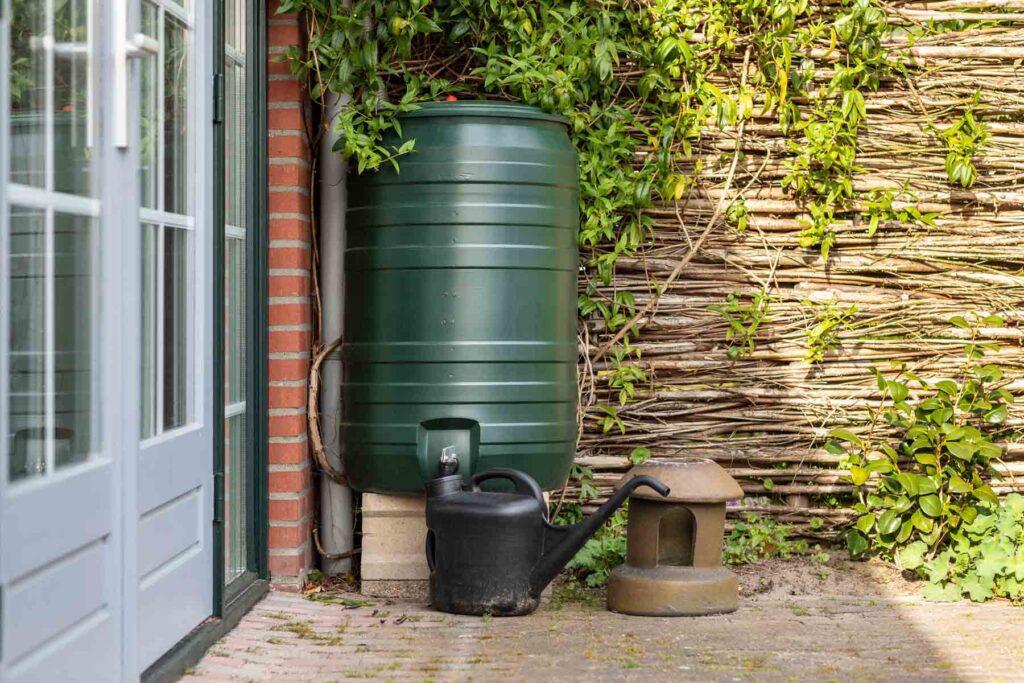Rainwater harvesting is a critical practice that helps to conserve water and reduce water bills, especially in areas with limited water supply. It involves collecting and storing rainwater that falls on rooftops, pavements, and other hard surfaces for various applications, including landscape irrigation, toilet flushing, and laundry. In this blog, we discuss how to approach designing rainwater systems effectively.
Table of Contents
ToggleThe Benefits of Irrigating Your Landscape with Rainwater
Landscapes require a significant amount of water to thrive, especially in areas with hot and dry climates. Most people rely on municipal water supply or well water to irrigate their landscapes, but this can be costly and environmentally unsustainable. By harvesting rainwater, you can reduce your reliance on municipal water and save money on water bills.
Rainwater Benefits
Rainwater is also better for plants than municipal water because it is free of chlorine and other chemicals that can harm plant growth. Also, rainwater is soft water, meaning it does not contain the minerals found in hard water that can build up in the soil and cause drainage problems.
Rainwater Harvesting Resources
There are plenty of rainwater harvesting resources to help you throughout this process (including this blog!), like the following:
Harvesting Rainwater for Your Homestead in 9 Days, The Prepper’s Water Survival Guide, Rainwater Harvesting for Drylands and Beyond.
Or maybe you’re already looking for a storage tank; we have a couple of fantastic options like FCMP Outdoor RC4000 50-Gallon Heavy-Duty, 55 Gallon Blue Water Barrel, Algreen ALG-86312 Athena 50 Gallon Plastic Rain Water Collection Drum Barrel.
Spigots on the side of the barrel for connecting multiple rain catcher barrels together for the expansion of your rainwater storage capacity
5 Steps of Rainwater Harvesting
Designing a rainwater harvesting system for landscapes involves several considerations, including the size of the landscape, the amount of rainfall, and the type of plants being irrigated. Here are the steps to follow when designing a rainwater harvesting system for landscapes:
Determine the Water Demand
Determining the water demand is the first step in designing a rainwater harvesting system for landscapes. This involves estimating the amount of water required to irrigate the landscape, considering the size of the area, the type of plants, and the climate. The water demand can be estimated using the following formula:
Water Demand = (Landscape Area) x (Water Requirement) x (Irrigation Efficiency)
Landscape Area: This is the total area that requires irrigation.
Water Requirement: This is the amount of water the plants require to grow and thrive. It varies depending on the type of plants and the climate.
Irrigation Efficiency: This is the percentage of water that the plants actually use. It is affected by factors such as the type of irrigation system, the soil type, and the slope of the landscape.
Determine the Rainfall and Runoff
The next step is to determine the amount of rainfall and runoff that can be harvested from the roof of the building or other hard surfaces in the landscape. This involves estimating the annual rainfall in the area and the percentage of rain that can be collected.
The amount of rainfall that can be harvested depends on the size and slope of the roof, the type of roofing material, and the design of the gutter and downspout system. Generally, a well-designed rainwater harvesting system can collect between 50% and 90% of the rainfall on the roof.
Select the Storage Tank
The storage tank is essential to the rainwater harvesting system as it stores the collected water for later use. Several factors should be considered when selecting a storage tank, including size, material, and location.
The size of the storage tank should be based on the water demand and the amount of rainfall that can be collected. A larger storage tank is required for a larger landscape or areas with lower rainfall. The material of the storage tank can be plastic, fiberglass, or concrete, depending on the budget and aesthetic preferences.
Rainwater Storage Tank Location
The location of the storage tank should be near the landscape, preferably on a higher elevation to allow gravity flow to the irrigation system. It should also be accessible for maintenance and cleaning.
This rain barrel is a popular choice for environmental protection enthusiasts. About 50 or 100 gallons of rainwater can be collected, and the collected rainwater can be reused for car washing, irrigation, etc.
Choose the Irrigation System
The irrigation system is the method used to distribute the collected rainwater to the landscape. There are several irrigation systems, including drip irrigation, sprinkler irrigation, and micro-spray irrigation.
Drip irrigation is the most water-efficient method and is suitable for plants that require low to moderate water. It involves using a network of pipes and emitters to deliver water directly to the plants’ roots. Drip irrigation is ideal for small gardens and shrubs.
Directs rainwater drainage from downspouts into collect barrels
Sprinkler Irrigation and Micro-Spray Irrigation
Sprinkler irrigation is suitable for larger landscapes and effectively distributes water evenly over a large area. It involves using a system of pipes, valves, and sprinklers to deliver water to the plants. Sprinkler irrigation is best suited for plants that require a higher volume of water, such as lawns and large trees.
Micro-spray irrigation is a hybrid system that combines the benefits of drip irrigation and sprinkler irrigation. Micro-spray irrigation is suitable for plants that require moderate water, such as vegetable gardens and flower beds. It involves using a network of pipes and micro-sprayers to deliver water to the plants.
This lovely set includes everything you need for bay plants, perfectly solves your lawn problems, Save water in your garden, agriculture etc
Install the Rainwater Harvesting System
Once the design is complete, installing the rainwater harvesting system is next. This involves installing the storage tank, the gutter and downspout system, and the irrigation system. Following the manufacturer’s instructions and local regulations when installing the system is important.
It is also vital to ensure that the system is properly maintained and cleaned to prevent the buildup of debris and contaminants affecting water quality. The storage tank should be inspected regularly for cracks and leaks, and the irrigation system should be checked for clogs and leaks.
How to Build a Rainwater Harvesting System
Rainwater harvesting is a critical practice that helps to conserve water and reduce water bills, especially in areas with limited water supply. It involves collecting and storing rainwater that falls on rooftops, pavements, and other hard surfaces for various applications, including landscape irrigation, toilet flushing, and laundry. We just discussed how to approach designing rainwater systems effectively. Do you have any more ideas on how to improve rainwater harvesting sustainability? Feel free to share below!
Frequently Asked Questions
How to Build Rain Water Harvesting?
Building a rainwater harvesting system involves several steps, including installing gutters and downspouts to collect rainwater, directing it to a storage tank or barrel, filtering out debris, and ensuring proper drainage. Detailed instructions and diagrams can be found in online tutorials or by consulting with professionals specializing in rainwater harvesting systems.
How to Calculate Rain Water Harvesting?
Calculating the potential yield of a rainwater harvesting system depends on factors such as the size of the catchment area (roof), average annual rainfall, and the capacity of the storage tank. Various online calculators and formulas are available to estimate the amount of water that can be harvested based on these parameters.
How to Make a Rainwater Harvesting System?
Making a rainwater harvesting system involves selecting appropriate materials, such as gutters, downspouts, filters, and storage tanks, and assembling them in a way that effectively collects, filters, and stores rainwater for later use. DIY guides and tutorials provide step-by-step instructions for creating custom rainwater harvesting systems tailored to individual needs.
What Is the Meaning of Rainwater Harvesting?
Rainwater harvesting refers to the collection, storage, and utilization of rainwater for various purposes, including irrigation, landscaping, and non-potable household uses. This sustainable practice helps conserve water resources, reduce reliance on municipal water supplies, and mitigate stormwater runoff and flooding.
How to Design Rainwater Harvesting System?
Designing a rainwater harvesting system involves assessing site conditions, determining water needs, selecting appropriate components, and planning for proper installation and maintenance. Consulting with professionals or referring to comprehensive guides can help ensure the efficient and effective design of a rainwater harvesting system tailored to specific requirements.


